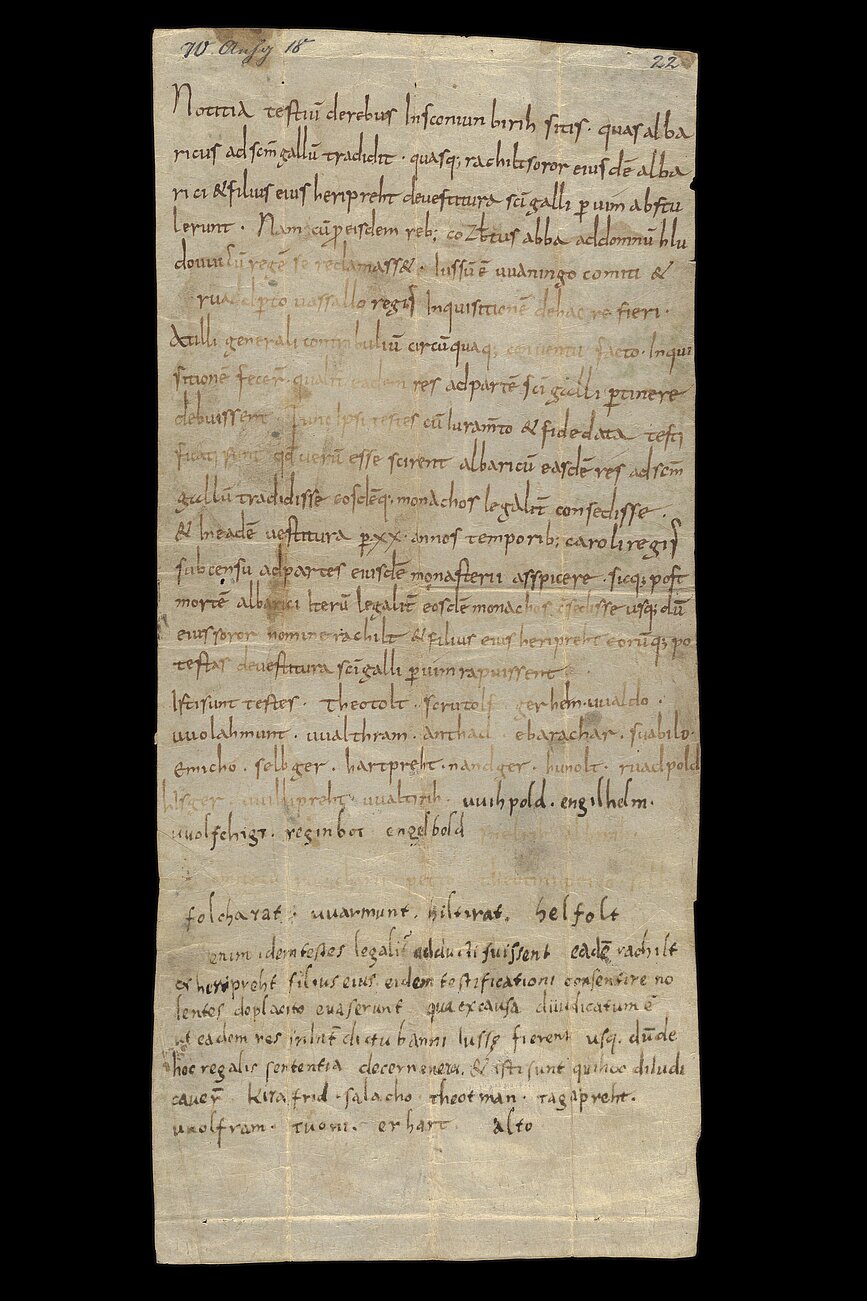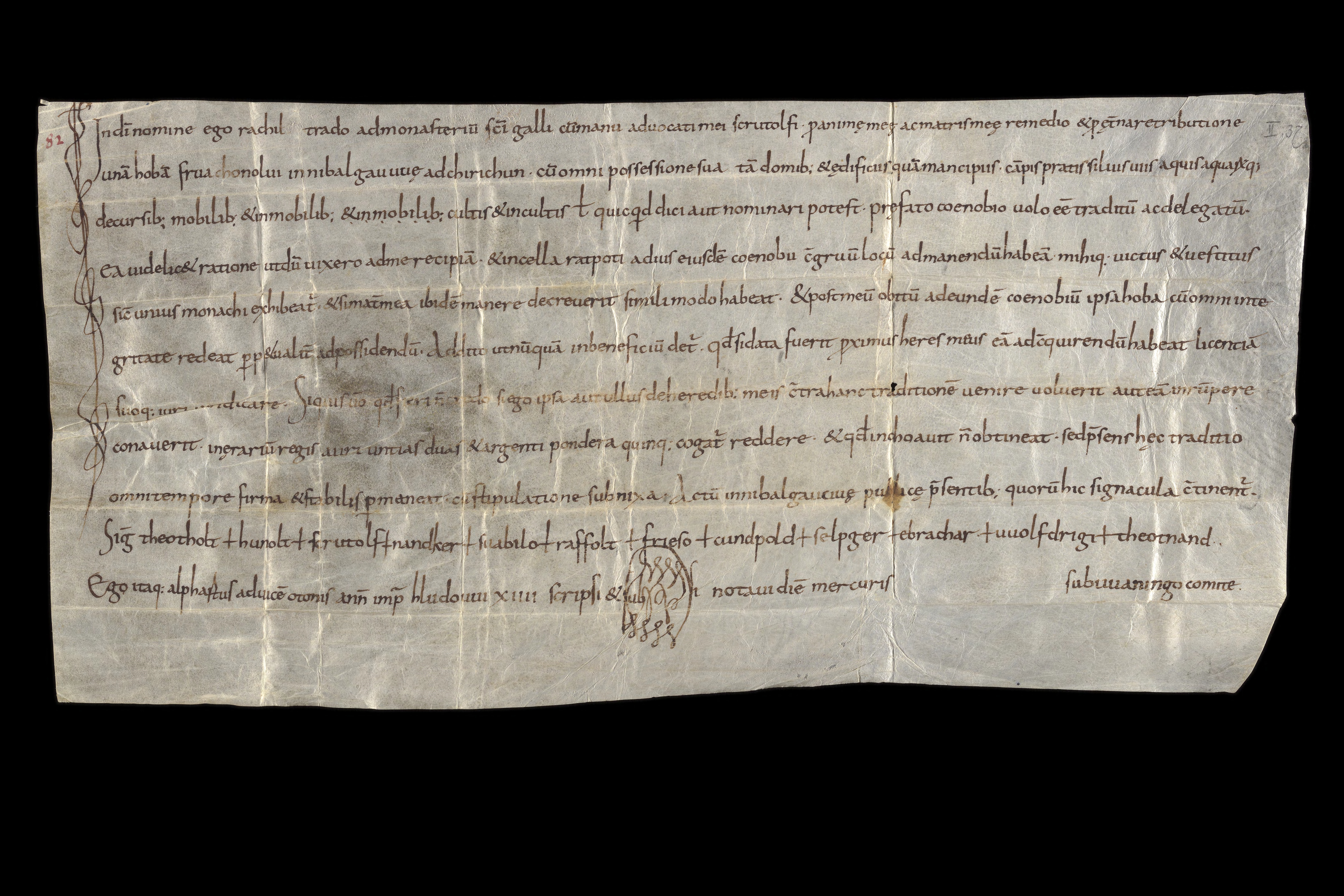August 15, 2024 | Amos Bronner | HI Research Blog
Imagine the scene of a present-day courtroom: The judge has just read out a sentence, clearly detrimental to one of the litigious parties, convicting a felon, assigning civil liability, or settling a property or inheritance dispute. Now imagine everyone present in the courtroom – the jury, if there is one, the witnesses, the winning party, and the general public – standing up and decreeing as one that the judgement reached was correct. Finally, try to conceive of the losing side standing up in court and admitting that they would no longer be able to claim that which they had desired, perhaps even conceding that they were in the wrong.
The above scene might seem rather fantastical. None of the major present-day justice systems of the world, at least the ones of which I am aware, expect judgement to be endorsed by all participants in this way, nor require the loser to publicly concede their defeat. Instead, that a judge or jury had had their say is usually grounds enough to consider a case closed, subject to appeal. And yet the image of judicial proceedings presented by the charters (legal and administrative documents) of Carolingian Francia seem to suggest that the endorsement of court-goers and the concession of the defeated happened frequently, perhaps even routinely.
Of course, one cannot simply take these declarations of the charters at face value. Charters are heavily formulaic documents, and those that record legal disputes tend to represent the point of view of the winning party, which, due to almost all extant charter collections, both in original form and in copies, having been preserved by churches, also gives us a significant ecclesiastical bias. So is this picture of consensus merely a formulaic convention of the charters, or does it actually represent the ways in which justice was done in the Carolingian world, and if so, how?
One way to approach this question, would be to look at the (few) cases in which this public display of consensus conspicuously failed to happen. Take, for example, the case of Rachilt and her son Heripreht, recorded in a Saint Gall charter (Chartularium Sangallense 322, Fig. 1) dating to sometime between 816 and 828. The charter records the names of witnesses who testified in an inquest held in Schönenberg, not too far from Lake Constance. At issue were properties which Rachilt possessed, but which Abbot Gozbert of Saint Gall claimed that her brother, Albaric, had given to the abbey. Gozbert had complained to Emperor Louis the Pious, who had sent Count Waning and the royal vassal, Ruadpert, to investigate the matter. At the inquest, thirty-three named witnesses testified completely in the abbey’s favor, saying under oath that Albaric had given the land to Saint Gall, that the monks had possessed it legally even after his death, and that Rachilt had seized it “by force.”
At this point, something rather unusual happens, in what would otherwise have been a typical dispute: “Although the witnesses had been legally brought forth, the same Rachilt and her son, Heripreht, not wishing to consent to that testimony [eidem testifactioni consentire nolentes], ran away from that trial. For this reason it was decided, that these same properties be ordered over to the interdict of the bannus, until royal sentence decided about this matter.”
The episode recorded in this charter is unusual but revealing. Rachilt and Heripreht’s escape is rather remarkable in its own right, but what I find particularly interesting, is the motive supplied for it by the charter’s scribe (likely Theothart, according to Bernhard Zeller’s identification); we are told that the pair fled because they did not wish to consent – consentire nolentes. Of course, the charter represents the abbey’s point of view, not Rachilt’s, but to me, this assigned motive makes perfect sense. It suggests that the many Carolingian-era charters in which the loser had to consent publicly are depicting an important step in the resolution of early medieval disputes, one which Rachilt and her son wished to avoid.
Moreover, Rachilt and Heripreht’s flight clearly affected the continued course of this case. Rather than closing the matter, the land was ordered, likely by the count (although the charter does not state so outright), into the bannus, which seems to mean here that it was to be temporarily confiscated, until the case made it back to the royal court to be decided. Whether this confiscation and appeal were carried out is impossible to tell, but at the very least, that Rachilt and Heripreht chose not to consent to what would have been a judgement against them, but to flee, delayed judgement and allowed another judicial instance an opportunity to look into the matter.
It is even possible that Rachilt managed to gain even more than that by refusing to consent, depending the precise dating of this and another charter (Chartularium Sangallense 323, Fig. 2). In that charter, Rachilt gives the Abbey of Saint Gall property in Leutkirch, not far from Schönenberg (where the inquest had taken place). In exchange, she receives from the abbey “a suitable place to live” in Kißlegg, “as would be provided for a one monk.” Additionally, she reserves her mother’s right to join her, “should she decide to live there,” as well as forbidding the abbey from offering that place in benefice to anyone other than her heir (presumably her son Heripreht) after her death. If, as seems likely, this donation happened after the inquest at Schönenberg (I won’t get into the technical aspects of dating here), then this arrangement could well represent the “sweetener” which the monks of Saint Gall offered Rachilt in order to get her to agree to hand over the disputed land. If so, then her consent to the judgement had a material value, which she managed to extract by withholding it. Even if this reconstruction of the sequence of events is not accepted, then at the very least, by fleeing rather than consenting to an adverse judgment, Rachilt and Heripreht delayed proceedings against them. Since actually confiscating the land and attracting royal attention again would likely have been burdensome, the monks may have decided to buy Rachilt’s consent instead.
I think this charter, as well as others, both from the Saint Gall collection and from elsewhere in the Carolingian world (well, at least north of the Alps and Pyrenees, the area under consideration in my ongoing dissertation project) shows that consensus was not just a notional ideal or a rhetorical flourish of the charters. Public endorsement of judicial outcomes by all present, especially by losers and their allies, was a concrete, crucial step that had real value in dispute resolution. Indeed, public consensus had a value real enough to be worth buying from one’s opponents, or coercing from them. Without it, a dispute could not be said to have been properly settled. That public consensus was such a crucial aspect of disputing reveals, I believe, some intriguing face-to-face, communal aspects of early medieval society, which lie at the heart of the difference between modern court proceedings, and those of the ninth century.
I would like to warmly thank Dr. Bernhard Zeller for discussing this charter with me, and everyone at IMAFO for their warm welcome and for the opportunity to spend the year in Vienna reading charters and researching early medieval disputes. I am also deeply grateful to Fulbright for funding my stay.

